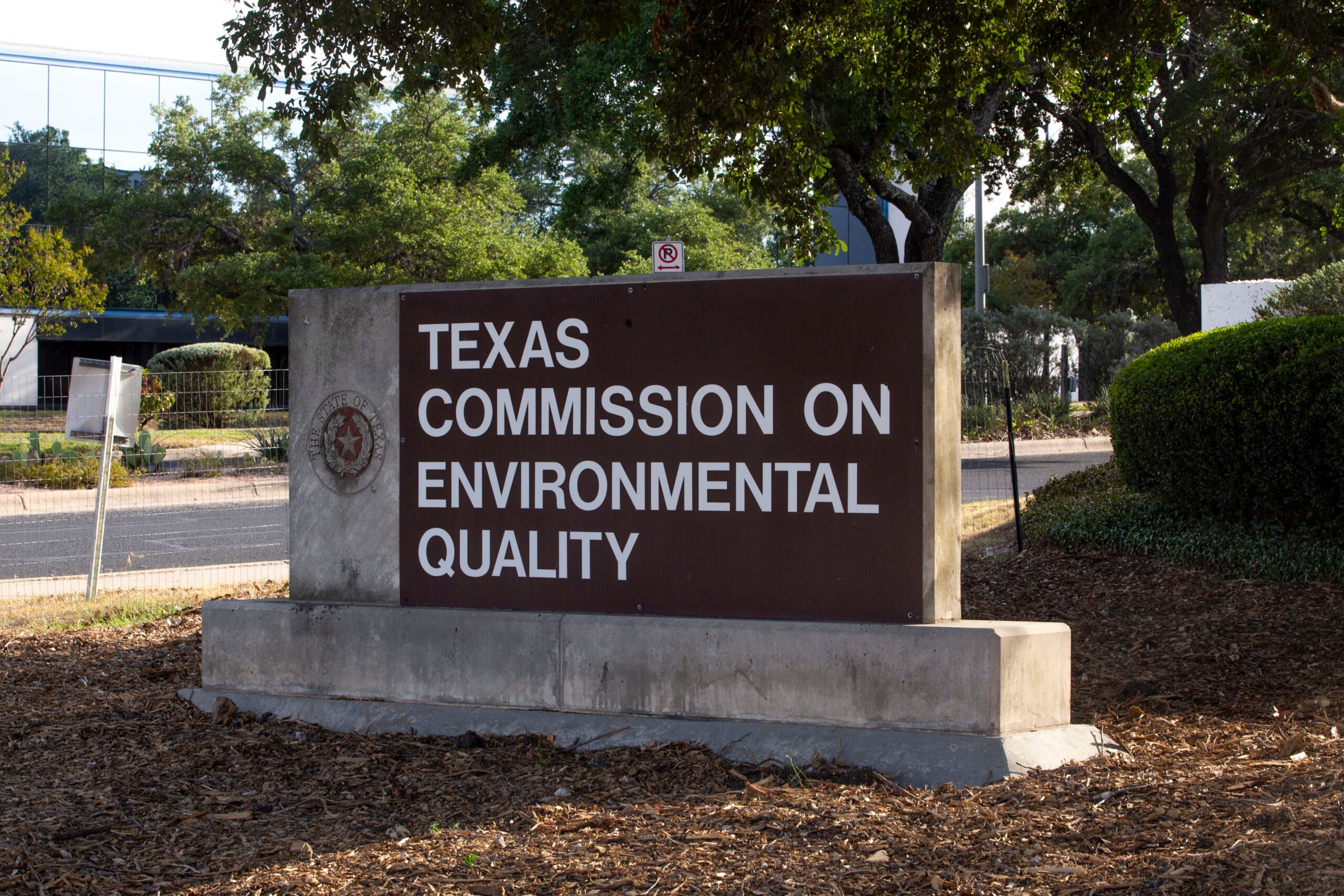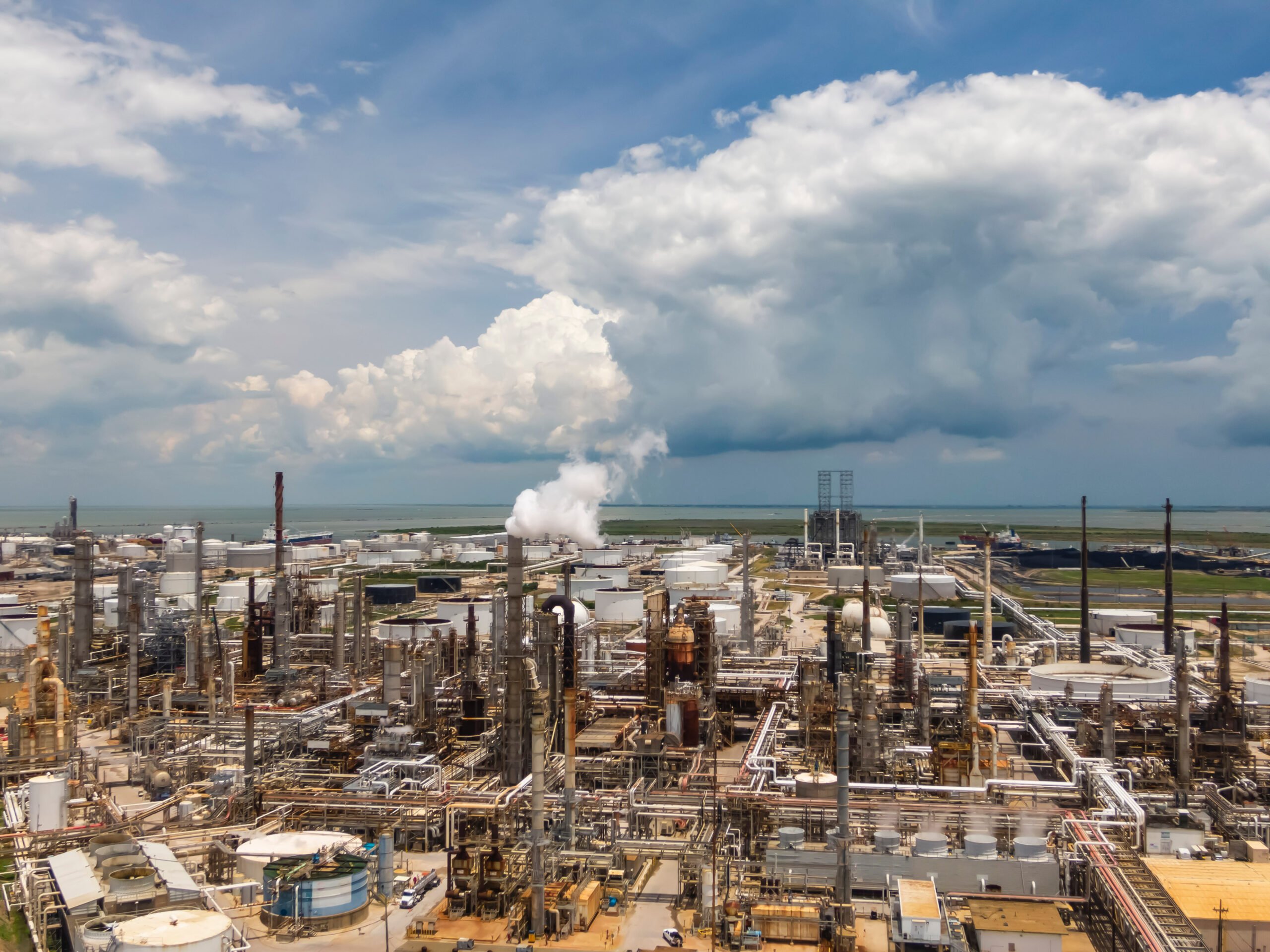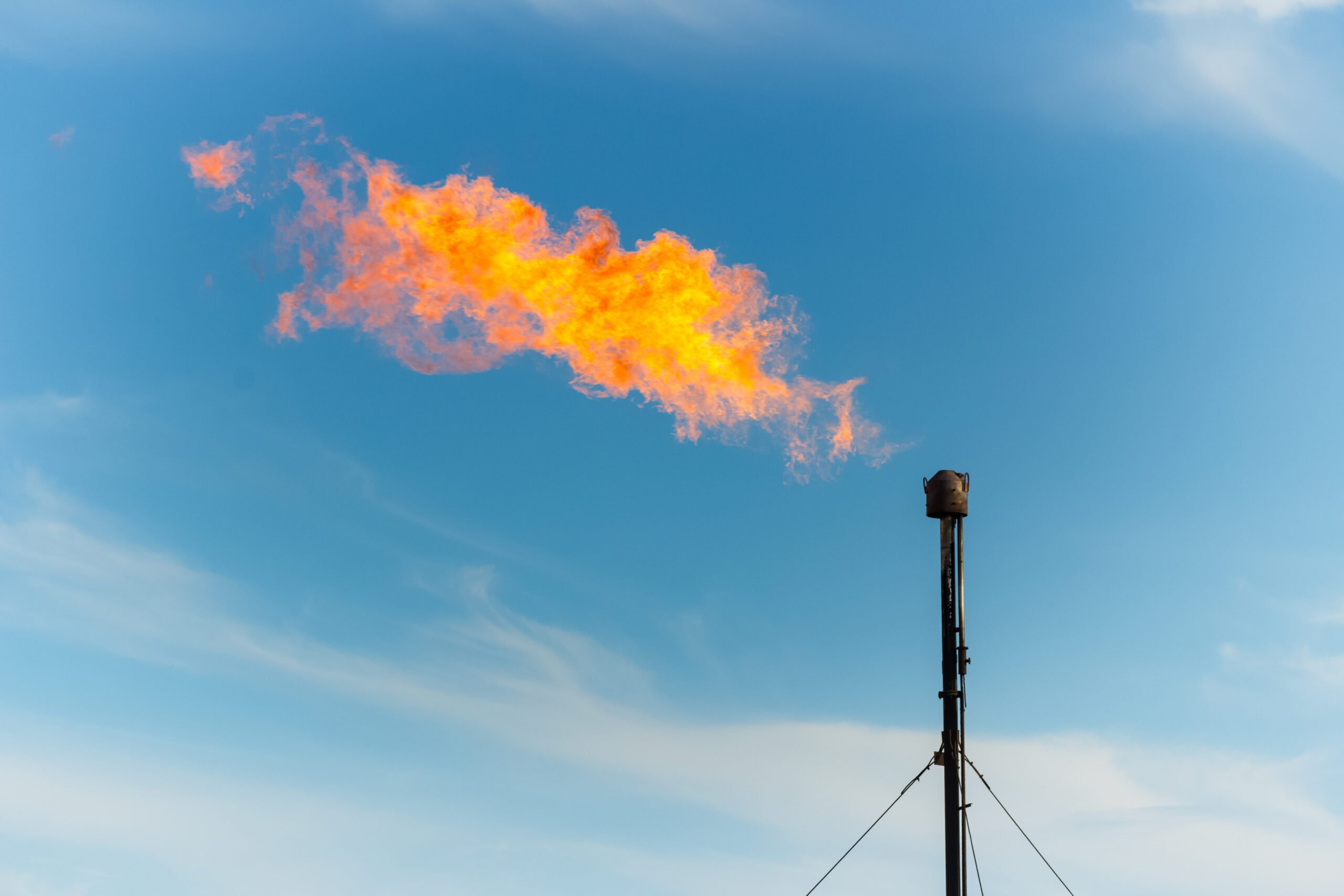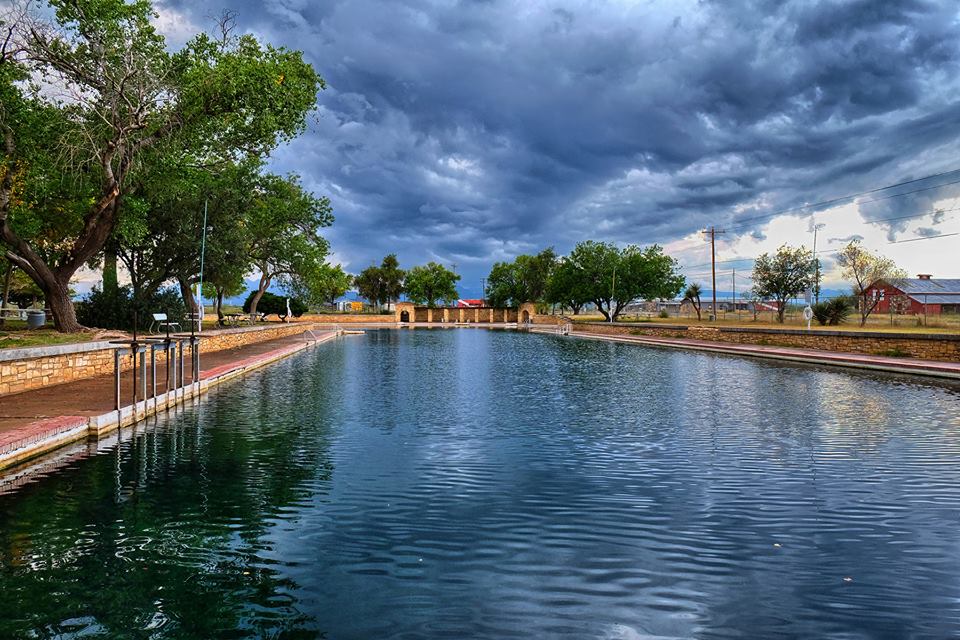
Huge Oil Discovery May Endanger Solace of Balmorhea
Locals fear encroaching oil and gas operations will change Balmorhea from a quiet Chihuahuan Desert town into an industrial hub.

A version of this story ran in the December 2016 issue.
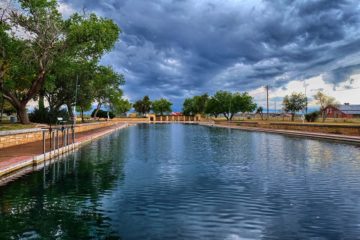
Update, 1:30 p.m., November 23:
Castlen Kennedy, a spokesperson for Apache said protecting the San Solomon springs and nearby communities is a “top priority” for the company. “We’ve taken a number of important steps to assure both residents and visitors to the area that these unique treasures will be protected,” she said. “From the outset, we set aside the park, as well as the city limits of Balmorhea … to any oil and gas exploration.”
Original story:
For Darrell and Neta Rhyne, the shimmering waters of the Balmorhea pool are both a natural treasure and the source of their livelihood. Since 1989, the couple have operated a dive-and-souvenir shop near Balmorhea State Park, outfitting scuba enthusiasts and snorkelers, many of whom stop at the park on their way to Big Bend National Park. In the summer, Darrell, who is also a scuba instructor, takes about 100 Boy Scouts on dives in the pool.
Balmorhea is a sleepy, predominantly Hispanic town about 60 miles north of Marfa with a population of about 500. The majority of businesses in Balmorhea are dependent on tourists visiting the pool, which was constructed in the 1930s as part of a New Deal program and is fed by San Solomon Springs, an underground gusher that pumps more than 20 million gallons of water a day into the pool. Teeming with fish and turtles, the pool is made for summer magazine covers.
“It’s like diving in a huge aquarium,” said Darrell. “It’s a unique Texas treasure and there’s nothing else like it in the world.”
But an energy company’s discovery of billions of dollars’ worth of oil and gas in the region has the Rhynes worried their business might dry up. In September, Apache Corp. shocked the industry when it announced the discovery of the equivalent of 15 billion barrels of oil in the Alpine High, a corner of the Permian Basin that had received little attention. The company has said it plans to drill oil and gas wells on 350,000 acres in the region, but that it won’t drill in the state park or near San Solomon Springs.
Environmental groups see Apache’s plans for the Alpine High as the next big fight in a rolling conflict between the fossil fuel industry and local communities. Several environmental groups, including Defend Big Bend, Big Bend Conservation Alliance, Sierra Club and Earthworks, are beginning to organize, arranging demonstrations, conducting studies that explore the risks to the springs and educating the region’s residents about the downsides to fracking.
“We’re certainly connecting this to the larger issue of protecting water … with the Dakota Access Pipeline, as well as with the Eagle Pass coal mine and the Trans-Pecos and Comanche Trail pipelines in West Texas,” said Tane Ward, an organizing manager with the Sierra Club.
Ward and other activists also foresee Apache doing damage beyond its well pads. Fracking operations require auxiliary infrastructure, such as pipelines and compressor stations. The more oil and gas that Apache fracks, the more infrastructure it will need. The more infrastructure is built, the more it enables fracking. Though the development is expected to bring jobs and tax dollars, the Rhynes fear it will permanently alter the Trans-Pecos region, changing Balmorhea from a quiet Chihuahuan Desert town into an industrial hub.
“We’re scared for our future and for our children and grandchildren,” said Darrell. “We’ve put all our life savings into this itty-bitty shop and we’re going to lose it.”
